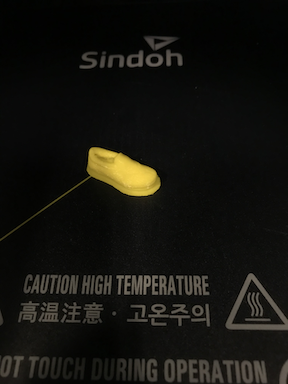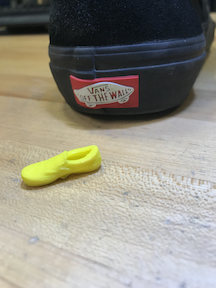

this week's assignment: design and 3D print an object (small, few cm3, limited by printer time) that could not be made subtractively & 3D scan an object
i began this week's assignment thinking about where i'm from, where coral and living things with colorful membranes abound in watery environments. i'm realtively new to 3D designing for printing, so i wanted to learn something new from this process. this led me down a rabbit hole and minor obsession with Voronoi diagrams. turns out that Voronoi diagrams are useful in a diverse array of settings: microbial cellular walls, muscle tissue, and 19th century investigations of infectious epidemics (cholera is gnarly). essentially, a Voronoi diagram is a partition of regions that are seperated based on distance between a set of seed sites, and for each seed there is a corresponding region consisting of all points closer to that seed than to any other. each of the regions are referred to as Voronoi cells, but a plane of these cell pockets create a Voronoi diagram.

this new fun pattern got me thinking it would be great to mesh it over something useful, like a pen holder. turns out the creators of Meshlab built a rendering tool to take care of the tedious seed-generation computation for Voronoi-noobs like myself. voila my first go at using the Voronoi mesh tool...


i took my little sphere to the printer, using Sindoh to load up and scale my .stl file.


voronoi-tastic! as i picked apart the base structure, the columns remained inside, creating a suspended core that i really loved, so i kept them.

i wanted to scan something with depth using tools i'd yet to play with, so i took my shoe off and set up to use the 3D Systems Sense 3D Scanner 350470. after 2 tries of slowly touring the scanner around the shoe, i was able to get inside the lip of the shoe with pretty solid stability. i was told lighter objects scan better than dark objects, but i found if there's sufficient amount of light against the object to create contrast, it wasn't a problem for the scanner.

and a baby (Vans shoe) was born into the world.


